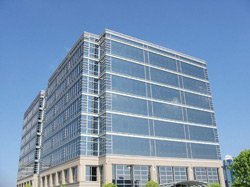What does the windmill symbolize in the story? Marxism, technology, revolution, capitalism – a complex web of ideas interwoven within the turning blades. The windmill stands tall, a silent witness to the shifting tides of power and progress. As the story unfolds, its significance becomes clearer, mirroring the underlying currents of societal change. Join me as we delve deeper into the layers of symbolism, exploring the dynamic interplay between ideology and industrialization. Let’s embark on this journey together, deciphering the secrets whispered by the windmill in the restless wind.
Exploring the Symbolism of the Windmill in Relation to Marxism, Technology, Revolution, and Capitalism
The windmill in the story serves as a multifaceted symbol, carrying deep meanings related to Marxism, technology, revolution, and capitalism. Let’s delve into the rich symbolism behind the windmill and how it reflects these complex themes.
The Windmill: A Marxist Allegory
The windmill in the story can be interpreted as a potent symbol of Marxism, embodying the ideals and struggles of the working class. Here’s how the windmill symbolizes key Marxist concepts:
- The Windmill as Means of Production: The construction of the windmill represents the collective effort of the animals to create a tool that will benefit all. This mirrors the Marxist emphasis on the means of production being owned and controlled by the proletariat.
- Equality and Cooperation: The windmill project highlights the animals’ unity and collaboration, reflecting Marxist principles of solidarity and collective action among the working class.
- Exploitation and Resistance: The animals’ labor in building the windmill parallels the exploitation of workers under capitalism. Their eventual rebellion against human oppression reflects the Marxist call for resistance against exploitative systems.
The windmill emerges as a powerful Marxist allegory, shedding light on the struggles and aspirations of the marginalized in society.
Technological Advancement and Innovation
In addition to its Marxist symbolism, the windmill also represents technological progress and innovation in the story. Here’s how the windmill embodies these themes:
- Harnessing Natural Resources: The windmill harnesses the power of the wind to generate electricity, showcasing the animals’ ability to utilize natural resources for technological advancement.
- Modernization and Efficiency: The introduction of the windmill signifies a shift towards modernization and increased efficiency in the animals’ society, mirroring the role of technology in driving progress.
- Power and Control: The windmill symbolizes not just technological advancement but also the power and control that come with owning and mastering technology, highlighting the dynamics of authority and influence.
Through the windmill, the story explores the transformative impact of technology on society and the complexities that arise from technological advancement.
Revolutionary Impulses and Struggles
The construction and destruction of the windmill reflect the revolutionary impulses and struggles that characterize the story. Here’s how the windmill embodies themes of revolution:
- Symbol of Change: The windmill serves as a symbol of change and revolution, representing the animals’ desire to overthrow oppressive systems and establish a new order.
- Conflict and Betrayal: The struggles surrounding the windmill construction underscore the conflicts and betrayals that often accompany revolutionary movements, highlighting the challenges of enacting change.
- Hope and Resilience: Despite setbacks and obstacles, the animals’ commitment to rebuilding the windmill showcases their resilience and unwavering hope for a better future, mirroring the spirit of revolution.
The windmill’s journey in the story encapsulates the tumultuous nature of revolutions and the enduring quest for social transformation.
Capitalist Exploitation and Greed
Furthermore, the windmill symbolizes the pitfalls of capitalism, shedding light on themes of exploitation and greed. Here’s how the windmill reflects capitalist dynamics:
- Commodification of Labor: The animals’ labor in building the windmill is exploited for the benefit of the ruling elite, mirroring the capitalist model of extracting value from workers’ efforts.
- Profit Motive and Competition: The pursuit of profit and competition surrounding the windmill project underscores the capitalist emphasis on self-interest and economic gain, often at the expense of communal well-being.
- Class Divide and Inequality: The disparities in access to resources and power associated with the windmill highlight the class-based inequalities perpetuated by capitalist systems, showcasing the inherent injustices of such structures.
Through the symbolism of the windmill, the story critiques the exploitative nature of capitalism and its detrimental effects on society at large.
In conclusion, the windmill in the story serves as a powerful symbol that encapsulates a myriad of themes, including Marxism, technology, revolution, and capitalism. Its journey reflects the complexities and contradictions inherent in these ideologies, offering profound insights into the human experience and the enduring struggle for justice and equality.
Frequently Asked Questions
What is the symbolic significance of the windmill in the story?
The windmill in the story symbolizes technology and progress, reflecting the idea of industrialization and modernization.
How does the windmill represent Marxism in the narrative?
The windmill can be seen as a representation of Marxism as it signifies the collective effort of the animals to improve their conditions and challenge the existing power structure.
In what way does the windmill symbolize the theme of revolution in the story?
The windmill serves as a symbol of revolution in the story, signifying the animals’ rebellion against oppression and their quest for change and freedom.
How does the windmill embody the concept of capitalism in the narrative?
The windmill symbolizes capitalism in the story by reflecting the idea of productivity, economic growth, and the transformation of labor into profit for the ruling class.
Final Thoughts
The windmill symbolizes the intersection of Marxism, technology, revolution, and capitalism in the story. It represents the power struggle among social classes, the impact of industrialization, and the potential for overthrowing established systems. The windmill’s construction and destruction mirror the ongoing tension between the proletariat and the ruling class. Its significance lies in highlighting the complexities of societal change and the contradictions within technological advancement.


